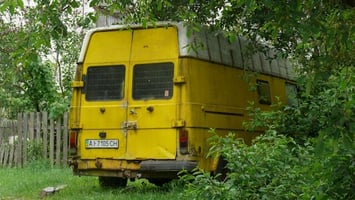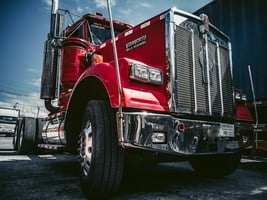Towing isn’t just about horsepower—it’s about awareness, preparation, and safety every mile of the way. Whether you’re heading out for a weekend getaway or hauling gear across state lines, having the ProPride 3P Hitch is a great start, but safe towing practices take it to the next level.
Even the best sway control system can’t replace a smart driver and a solid routine. That’s why this guide is packed with actionable towing safety tips designed to help you get the most out of every trip—confidently and securely.
In this blog, you’ll learn:
- How to inspect and prep your ProPride 3P setup before departure
- On-the-road best practices for safe, stable towing
- What to do before, during, and after towing emergencies
Let’s get you road-ready, with tips that protect your rig, your passengers, and your peace of mind.
Pre-Trip Inspection: Start with a Safe Setup
Before your tires ever hit the pavement, a solid inspection routine can mean the difference between a smooth trip and a roadside emergency. Think of this step as your towing “pre-flight checklist.”
Hitch and Coupler Connection
- Make sure your hitch is fully engaged and locked in place.
- Double-check the coupler latch is secured and pinned.
- Inspect for rust, cracks, or stress on the coupler, ball mount, and hitch head.
If any part of your hitch looks worn or feels loose, pause and fix it. A 10-minute fix in the driveway can save hours of stress on the highway.
Brakes and Lights
Your brake system isn’t just for stopping—it’s your lifeline on the road.
Here’s what to check:
- Trailer brakes respond properly to your brake controller
- No brake warning lights or delayed response
- Trailer lights (brake, turn signals, running lights) all functioning
Pro Tip: Always do a light test before every trip. It takes 60 seconds and saves lives.
Tire Condition and Pressure
Tires are often overlooked, but they’re one of the most common causes of towing failures.
Check both your tow vehicle and trailer tires for:
- Cracks or dry rot on sidewalls
- Uneven tread wear, which could signal alignment issues
- Proper pressure based on manufacturer recommendations
Underinflated or worn tires can lead to blowouts, poor handling, or decreased braking power.
Safety Checklist: Your Pre-Trip Essentials
Use this quick-reference table to run through your setup before every trip:
|
Pre-Trip Check |
What to Inspect |
Why It Matters |
|
Hitch System |
Coupler latch, hitch ball, safety pin |
Ensures secure trailer connection |
|
Brakes and Brake Controller |
Brake pedal feel, trailer response |
Provides safe stopping power under load |
|
Lights |
All trailer and tow vehicle lights |
Keeps you visible and legal on the road |
|
Tires |
Pressure, tread depth, cracks |
Prevents flats or blowouts |
|
Chains and Wiring |
Safety chain placement, harness connection |
Ensures full backup and signal integrity |
Secure Weight Distribution and Cargo
Proper weight distribution is key to sway control—and it’s where your ProPride 3P really excels. But even the best hitch needs a well-balanced load to work properly.
- 60% of trailer weight should be toward the front (near the tongue).
- Avoid rear-heavy loads—they increase sway risk and reduce braking efficiency.
- Place heavier items low and centered over the axle when possible.
Loose items shift. Shifting weight causes instability. Use these basic cargo security tips:
- Use ratchet straps for large or heavy gear
- Keep lighter items in cabinets or containers
- Avoid stacking above window level to reduce top-heaviness
Safe Towing Practices on the Road
Once you’re rolling, your job shifts to awareness and smart driving habits. Your ProPride 3P gives you sway-free confidence, but technique still matters.
Stay Alert and Maintain Safe Speed
The biggest enemy of towing stability? Distraction and excessive speed.
- Keep both hands on the wheel and eyes 12–15 seconds ahead
- Avoid phone use or multitasking
- Drive 5–10 mph under the speed limit in most towing situations
Faster isn’t better—it’s riskier. Let the ProPride do its job by towing smoothly and consistently.
Increase Following Distance
Heavy loads require longer stopping times. Instead of tailgating, give yourself a buffer:
- 3 seconds for light loads
- 5–6 seconds for full-size travel trailers
- Watch for brake lights 2–3 cars ahead, not just the vehicle in front
This simple habit prevents accidents, gives you time to adjust, and reduces trailer sway from hard stops.
Navigating Turns and Lane Changes
Your turning radius and lane positioning matter more when towing.
Smart Turning Tips:
- Take wider turns to prevent trailer curb strikes
- Watch mirrors for clearance
- Use intersections with plenty of space whenever possible
Lane Changes Made Safe:
- Signal at least 5 seconds in advance
- Check both side mirrors and blind spots
- Avoid weaving through traffic—stick to one lane as much as possible
Be Prepared for Emergencies
Even the most well-maintained trailer setups can encounter issues. Preparing for the unexpected can turn a breakdown or delay into a minor hiccup, not a full-blown crisis.
Assemble a Complete Emergency Kit
Think beyond the basics. A towing-specific emergency kit helps you deal with roadside problems quickly and safely.
Here’s what every towing emergency kit should include:
- Spare tire for both trailer and tow vehicle
- Jack and lug wrench sized for trailer and tow vehicle lugs
- Heavy-duty flashlight or headlamp
- Reflective triangles or LED road flares
- Tire pressure gauge
- Jumper cables or portable jump starter
- Duct tape, zip ties, and a multi-tool
- First-aid kit
- Extra water and non-perishable snacks
Storing these items in a weatherproof bin makes them easy to grab when you need them most.
Know Your Route and Backup Plans
Prepping for a trip goes beyond gear. Planning your route helps avoid trouble spots and gives you options if things go sideways.
- Download offline maps in case of poor cell reception
- Identify rest stops, fuel stations, and RV-friendly exits
- Keep a list of local repair shops or roadside assistance numbers
This planning gives you the upper hand during detours, road closures, or equipment failures.
Post-Trip Practices That Keep You Safe
Finishing your trip doesn’t mean safety checks stop. A quick post-trip review keeps your gear in top shape and preps you for next time.
Once you’ve parked and chocked your trailer:
- Check tire treads and sidewalls for damage
- Inspect the hitch for wear, debris, or loose bolts
- Examine the wiring harness and plug for fraying or moisture
- Clean mud or grit from the sway bars and brackets
These small steps prevent long-term wear and help you catch problems before they escalate.
After unhitching, protect your gear:
- Store sway bars and pins in a dry, secure bin
- Cover the hitch head with a protective cover
- Coil your chains neatly and inspect for rust or kinks
Keeping your towing setup clean and organized extends its life and makes hitching next time faster and easier.
Safe Towing Starts with Smart Habits
Safe towing isn’t just about having the best equipment—it’s about knowing how to use it and staying alert from start to finish. Your ProPride 3P Hitch gives you the tools for sway-free towing, but your habits behind the wheel and under the trailer are what make each trip truly safe.
From detailed pre-trip inspections to on-road awareness and post-trip care, these tips form the foundation of every confident tow. With practice, they become second nature—and your towing experience becomes safer, smoother, and far more enjoyable.
With the right mindset, preparation, and a ProPride 3P Hitch, you’re always ready for the road ahead.
Frequently Asked Questions
Even seasoned towers have questions when it comes to safety. Here are some important, lesser-asked questions that can make a big difference in your towing experience.
Can I use the ProPride 3P in heavy rain or snow?
Yes, the hitch is engineered for all-weather towing. However, you should slow down significantly, double-check tire tread and brake function, and ensure that the hitch components are clean and not obstructed by ice or mud.
What should I do if my trailer starts to sway unexpectedly?
Maintain a firm grip on the wheel, reduce your speed gradually, and avoid sharp steering inputs. Let the ProPride 3P’s sway control system stabilize the trailer. Do not slam on the brakes unless absolutely necessary.
How often should I check the torque on the hitch bolts?
Check all torque settings after the first 100 miles of towing, then inspect monthly or before any long trip. Vibrations and road conditions can gradually loosen hardware, especially after storage or harsh weather.
Is it safe to tow at night with a ProPride 3P setup?
Yes, provided your lighting system is fully functional. Make sure all trailer lights are working and clean. Reduce speed and increase following distance to account for reduced visibility and longer reaction times.
Can the ProPride 3P work with aftermarket suspension mods?
In most cases, yes. If you’ve installed lift kits or air suspension, you may need to adjust your hitch head height and sway bar angles accordingly. Consult with ProPride support for custom guidance on your setup.


